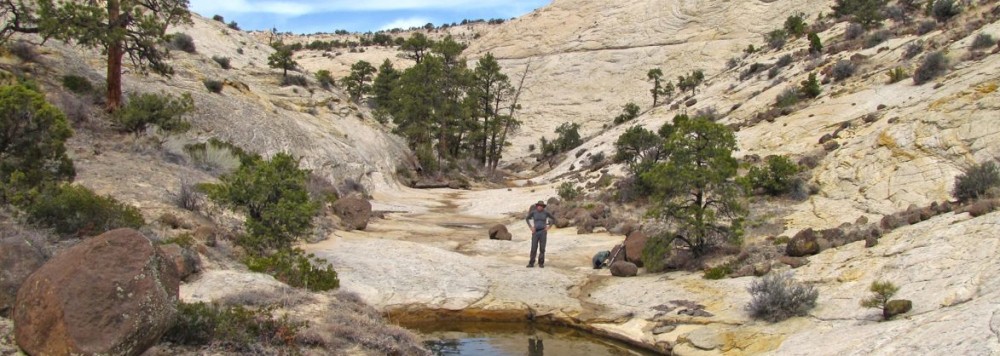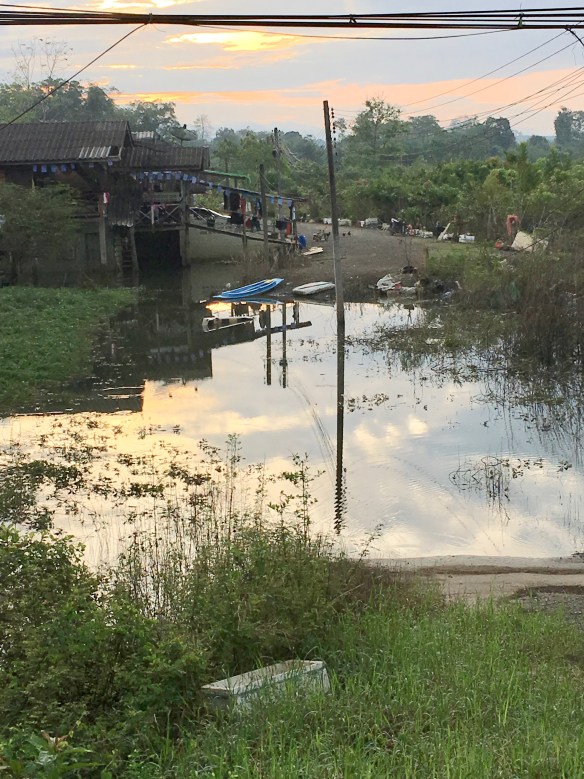 Not since 2010 have I seen so dense a mass of foreigners promenading the streets as I saw this weekend in Koh Lanta. New Years’ Eve 2010 in Chaing Mai was the last time it was elbow-to-elbow with a throng of primarily Europeans, curb to curb carousing to find a bargain, drink or curiosity, from the collage of colorful street vendors, bars beckoning in English with “specials” on drinks and restaurants cheek by jowl, some even advertising “Thai food.” All in their casual singlet’s or bikini-topped beachware playing the roles of carefree vagabonds with their newly minted tattoos. It was Disneyland for adults with a Sun, Fun and Beach theme.
Not since 2010 have I seen so dense a mass of foreigners promenading the streets as I saw this weekend in Koh Lanta. New Years’ Eve 2010 in Chaing Mai was the last time it was elbow-to-elbow with a throng of primarily Europeans, curb to curb carousing to find a bargain, drink or curiosity, from the collage of colorful street vendors, bars beckoning in English with “specials” on drinks and restaurants cheek by jowl, some even advertising “Thai food.” All in their casual singlet’s or bikini-topped beachware playing the roles of carefree vagabonds with their newly minted tattoos. It was Disneyland for adults with a Sun, Fun and Beach theme.

About 15 cyclists from the Trang Cycling Club trucked or rode to the island to take part in a Koh Lanta-promoted 30 km circle tour of the island.
Never knowing just what the weekend event is, I just ask where and when to meet and find out once we start, or get there. The last time I’d visited the island with the cycle group we rode the 140-km distance and participated in a similar event associated with Lanta Koh Lanta, a festival in Old Town on the east side of the island. It was more of a fair with a costumed parade and typical food stall tents and amusements lined up on a closed street in front of the school. Yes, there were tourists but by far the majority were Thai.

It’s not uncommon for our group to arrange with a Wat (Buddhist Temple) to allow us to “crash camp” inside the temple. We take over the Wat or school (like on Sukorn Island) sleeping inside with tents, cooking with gear trucked in, washing and bathing in their facilities, all for 50 Baht ($1.40) per person. It’s all quite normal and acceptable, the monks even want to share their food, gathered daily with begging bowls on the streets of the local community. One other reason to “camp” inside was the troop of monkeys that seem to like rifling thru human things.
 This Wat is distinguished by several features: It’s the headwaters of a natural spring that supplies most of the nearby town, and with it’s proximity to the invasion of European Buddhist foreign visitors seeking a dose of enlightenment and merit making, it uses the English speaking monk to bless them in situ. In return this Wat has received foreign funding for major capital upgrades to the worship hall, baths and toilets.
This Wat is distinguished by several features: It’s the headwaters of a natural spring that supplies most of the nearby town, and with it’s proximity to the invasion of European Buddhist foreign visitors seeking a dose of enlightenment and merit making, it uses the English speaking monk to bless them in situ. In return this Wat has received foreign funding for major capital upgrades to the worship hall, baths and toilets.
One of our group said they wanted to go to the “market” after dinner. Thinking he was going after provisions, I asked to go along expecting a sleepy mini-mart or vegetable stand selling the last of the day’s products. Boy howdy, was I naive.
Around the hillside, less than a quiet kilometer away, was nothing short of “Gringo-town” fronting the western Koh Lanta beaches. For the seeker of movie-grade bazaar crowd scenes and action, this is the place to be, the place to selfie yourself having the best time Facebook can offer. One time I saw graffiti on the back of a bench in Spain facing the tourist hotels saying “Hello Mr. Tomato” referring to the propensity of tourists to come and immediately get sunburned. This was also de rigueur in Koh Lanta: get a tan as fast as you can, to prove you had a great vacation.

 The event the following morning was also on a beach, this one 12-km further south and far from the madding crowds. About 298 Thai riders and 2 fahrangs (one Italian guy whose Thai wife runs some kind of business for tourists), saddled up for the Tour d’Lanta. Once again it was led by a “sound truck” at 20 KmPH so we were in effect a “lycra parade” of happy-to-be-riding cyclists with our personal escort thru villages, towns and countryside.
The event the following morning was also on a beach, this one 12-km further south and far from the madding crowds. About 298 Thai riders and 2 fahrangs (one Italian guy whose Thai wife runs some kind of business for tourists), saddled up for the Tour d’Lanta. Once again it was led by a “sound truck” at 20 KmPH so we were in effect a “lycra parade” of happy-to-be-riding cyclists with our personal escort thru villages, towns and countryside.
It’s amazing to see the two Thailands: the beach party version of a popular Asian beach town an hour from an International airport, and the local Thai people’s reality of a town like Trang. Evidently in the short time we’ve been visiting Thailand, 7 years now, the tourists have discovered a new wonderland that is just in-between Koh Lanta’s past beach shack quaintness and the high-rise hotel scene of Krabi or Phuket. If you want to see beach shack prosperity before it becomes high dollar fun, come join the tens of thousands ambling the night markets and renting scooters to find a secluded beach with only 100 other sun seekers on Koh Lanta.


We finished the ride with an all-you-can-eat typical plateful of rice topped with two kinds of fish and vegetables. Cleansing our palates with unlimited watermelon wedges, it was hard to get up from our tables.
But we did. Some of our group opted for the 2 PM squid fishing contest, others returned to the Wat, and four of us challenged to road to the National Park at the far end of the island. There were two challenges, neither of which I managed to photograph. The first was riding a narrow winding hillside road above the coastline along with no less than one thousand motor scooters piloted by first-time drivers. You could ratchet down the thousand to maybe 759, but I’d like to throw in all those 241 scooters parked along the road where a trail led to secluded beaches.
The second challenge was the road itself, a cliff-hanger of sorts rising from beach level to rocky hillside in fractions of a kilometer. I only saw one sign that said 17% grade, but there were many 14’s 12’s and the rest were unmarked. Some of the scooters with two of the larger wide-load foreigners had to jettison a rider to make it to the top. Slept straight thru that night.

This public “shower” where the water bowls self-fill was a new lesson in Thai bathing. We’d seen isolated instances where they wrap themselves in a sarong and then splash water over themselves, but that was out in the open. Here in the semi-walled shower four or five guys can dowse themselves in their sarongs all at once. If you fling that bowl fast enough it’s kind of like a shower. [An above-ground cistern keeps the sinks filled via a siphoning principal.]
All good experiences, and I never need to go back to Koh Lanta. Six of us rode home for a 140-km close to the weekend.




 This Wat is distinguished by several features: It’s the headwaters of a natural spring that supplies most of the nearby town, and with it’s proximity to the invasion of European Buddhist foreign visitors seeking a dose of enlightenment and merit making, it uses the English speaking monk to bless them in situ. In return this Wat has received foreign funding for major capital upgrades to the worship hall, baths and toilets.
This Wat is distinguished by several features: It’s the headwaters of a natural spring that supplies most of the nearby town, and with it’s proximity to the invasion of European Buddhist foreign visitors seeking a dose of enlightenment and merit making, it uses the English speaking monk to bless them in situ. In return this Wat has received foreign funding for major capital upgrades to the worship hall, baths and toilets.



















































 Rides start with the obligatory Facebook photo, so that you can show who came that day. Similar to the US, just about all digital communication is done thru Facebook. So if I miss a photo I can be sure to find one on a Thai Facebook site, as you can see with TigerSong’s credited photos.
Rides start with the obligatory Facebook photo, so that you can show who came that day. Similar to the US, just about all digital communication is done thru Facebook. So if I miss a photo I can be sure to find one on a Thai Facebook site, as you can see with TigerSong’s credited photos.




